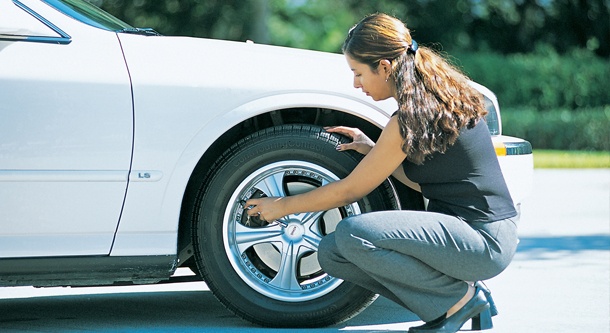Over the life of an electric vehicle, tires can have a profound effect on electric vehicle range and efficiency.
That’s been given more nuance with a new collaborative study, between Geely Research Institute, Shanglong Linglong Tire Co., and ExxonMobil—and reported earlier this month in SAE International.
Over the life of an electric vehicle, the researchers found, the variation in rolling resistance alone, due to fluctuations in tire pressure, could mean 4% more energy needed, the study highlights. No wonder tire suppliers continue to develop airless tire designs like the Michelin one GM is currently testing for its Chevrolet Bolt EV, and engineers have dabbled with designs that recover energy as they roll or harness heat generated in flexing.

Chevrolet Bolt EV fitted with prototype airless tires from Michelin
The Chinese study assumes an average annual vehicle distance of 12,000 kilometers per year; but expanding this out to the typical U.S. vehicle distance of 12,000 miles per year, it amounts to nearly 58 kwh per car, annually.
For most of today’s full long-range EVs, like the Chevrolet Bolt EV or Nissan Leaf Plus—or the Tesla Model 3 Standard Range Plus—that’s about a full charge lost not to power electronics or battery technology, but something as simple as a tire swap.
The researchers do point out that the reduction in pressure loss and rolling resistance could allow automakers to use a lighter/cheaper battery.
Extending that estimate out for the entire Chinese market, given cumulative EV sales, simply changing the tire could save 90 gigawatt-hours per year—enough to power 50,000 Chinese households.

Environmental impact of tire pressure control - ExxonMobil
The team found air retention to be an issue, with 48% of the tires examined falling into what was judged to be a “poor” category for that—meaning that there will be significant air loss over time simply from normal use, leading to lower fuel economy or efficiency if pressures aren’t routinely topped off.
Tire-pressure alert systems aren’t the solution either. According to the study, while early tire-pressure monitoring systems were intended mainly to prevent the catastrophic—underinflation by 20%—the latest systems are programmed for a trigger of 2.5%. That might be fine for safety, but it still reflects an efficiency loss.
Although much attention has been paid to tread, compound, and what’s on the outside of the tires going into many EVs, the researchers point out that for maintaining pressure the solution might be addressing what’s inside the tire. With a new material for the inner liner, the tire was able to retain pressure 33% better, based on a calculated six-month period.

Checking tire pressure - AAA
The study notes that based on ExxonMobil road testing, with greater attention to tire pressure loss—and rolling resistance—across the lifetimes of the tire and electric vehicle, EV range could be improved by an astounding 3% to 7%.
That largely confirms the conclusions from a number of smaller, more anecdotal tests—that the range difference from tires alone can often be underestimated.
The findings will help inform decisions about tire specifications for the next generation of EVs from the Geely Auto Group, which includes Geely, Volvo Cars, Polestar, and Lynk & Co.
